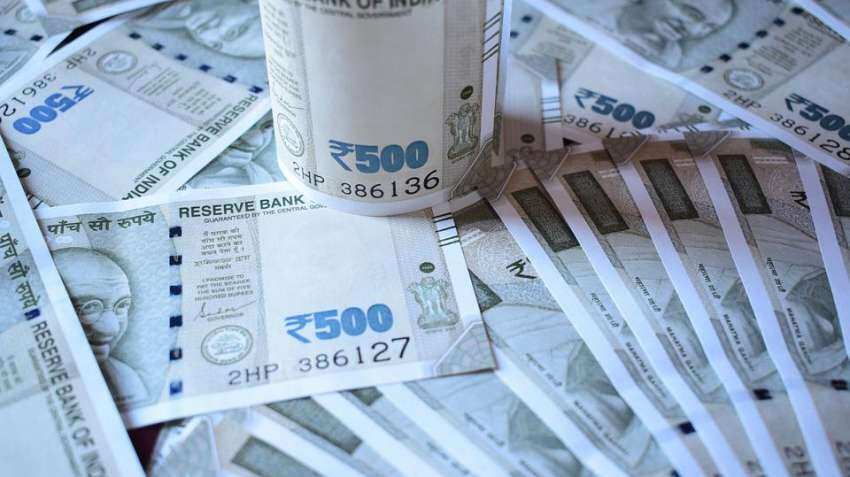Public sector contributes 20% to national income, accounts for 40% of total wages: Report
The share of the private sector in GVA and wages is "more evenly balanced", the agency said, pointing out that it accounts for 35.2 per cent of the wages while its contribution to GVA is 36.3 per cent for the same period.

The public sector contributes only 20 per cent to the national income, but accounts for nearly 40 per cent of the total wages, a report by a domestic ratings agency said on Monday.
The average share of the public sector in gross value addition for the ten years ending FY21 is 19.2 per cent but the share in wages is 39.2 per cent, India Ratings and Research said in an analysis based on gross value added (GVA) data released by the National Statistical Office.
The share of the private sector in GVA and wages is "more evenly balanced", the agency said, pointing out that it accounts for 35.2 per cent of the wages while its contribution to GVA is 36.3 per cent for the same period.
It can be noted that those pressing for a lesser role of the state in the economy, often point out to the lack of efficiency in the public sector.
The agency's report said nominal wages grew at a compounded annual growth rate (CAGR) of 10.4 per cent, while return on capital grew at a CAGR of 8.8 per cent during FY12-FY21.
However, the data at the institutional classification level, presents a somewhat mixed picture, it said, pointing that wages grew fastest at a CAGR of 13.2 per cent in the private sector, followed by the public sector at 10 per cent and the household sector recorded the slowest wage growth at a CAGR of 7.2 per cent.
From a returns on capital growth perspective, the household sector was the fastest at 9.1 per cent during the same period, followed by the private sector at 8.9 per cent, while the public sector was lowest at 6.2 per cent, the report said.
If one were to break up the decade into two, the data shows that growth both in wages and return on capital declined markedly in FY17-FY21, compared to FY12-FY16 period, the report said.
It can be noted that ever since the demonetisation in 2016, growth had been steadily declining till the last quarter of FY20, when COVID-19 hit everybody and pushed it into contraction for a few quarters.
The report said the nominal wage growth slowed down to 6.1 per cent during FY17-FY21 from 11.9 per cent during FY12-FY16, impacting consumption demand.
The same is clearly visible in the nominal private final consumption expenditure (PFCE) growth which declined to 7.2 per cent during FY17-FY21 from 13.4 per cent during FY12-FY16.
More importantly the household sector, which accounts for 44.5 per cent of the GVA, saw their nominal wage growth declining to 5.7 per cent during FY17-FY21 from 8.2 per cent during FY12-FY16, the agency said, adding both wage growth and PFCE growth turned negative in the COVID-19-impacted year of FY21.
"Since much of the growth in consumption demand is driven by the wage growth of the household sector, a recovery in their wage growth is going to be critical for a sustainable recovery in consumption demand and overall GDP growth?, Sunil Kumar Sinha, its senior director and principal economist said.
Get Latest Business News, Stock Market Updates and Videos; Check your tax outgo through Income Tax Calculator and save money through our Personal Finance coverage. Check Business Breaking News Live on Zee Business Twitter and Facebook. Subscribe on YouTube.
RECOMMENDED STORIES

Looking for short term investment ideas? Analysts suggest buying these 2 stocks for potential gain; check targets

SBI 444-day FD vs PNB 400-day FD: Here's what general and senior citizens will get in maturity on Rs 3.5 lakh and 7 lakh investments in special FDs?
06:13 PM IST










 Maharashtra will play key role in achieving India's $5 trillion economy goal: Minister Aditi Tatkare
Maharashtra will play key role in achieving India's $5 trillion economy goal: Minister Aditi Tatkare India's GDP growth to pick up in third quarter compared to first half of FY25: ICRA report
India's GDP growth to pick up in third quarter compared to first half of FY25: ICRA report GST collection grows 9% to Rs 1.87 lakh crore in October
GST collection grows 9% to Rs 1.87 lakh crore in October IMF says India's GDP growth to moderate to 7% in 2024 and 6.5% in 2025
IMF says India's GDP growth to moderate to 7% in 2024 and 6.5% in 2025  India poised to be third largest global economy by 2030, rising population presents challenges: S&P
India poised to be third largest global economy by 2030, rising population presents challenges: S&P